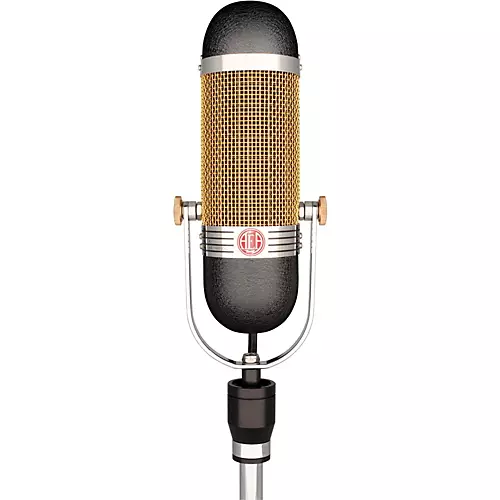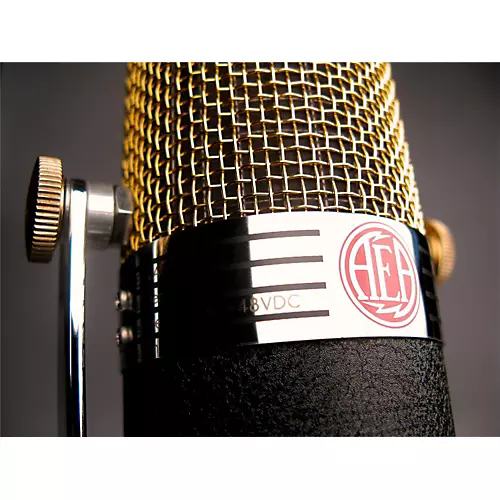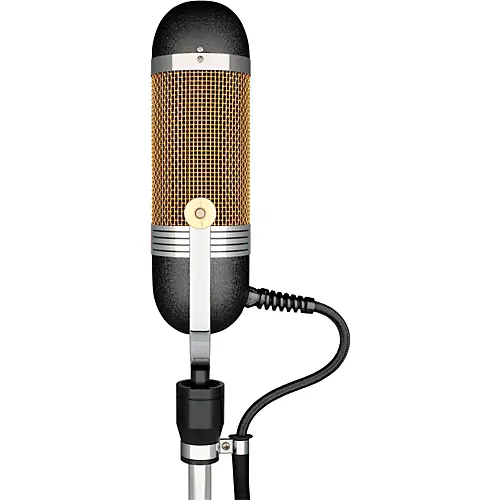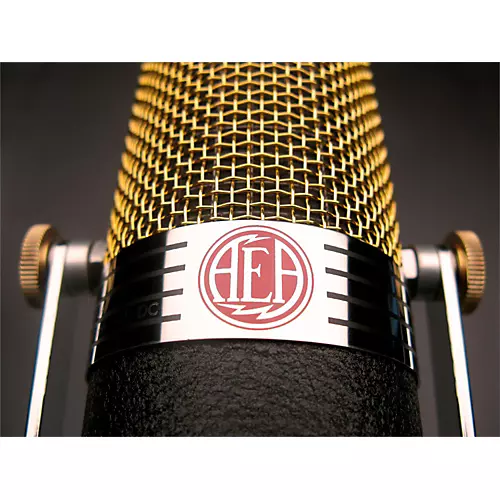Home
/
AEA Microphones R84A Active Ribbon Microphone
AEA Microphones R84A Active Ribbon Microphone
Quantity
-
DetailThe R84A is a pill-shaped, side-address, phantom-powered ribbon microphone with a bidirectional (or figure-of-8) pickup pattern. It is assembled with the same Big Ribbon and tuning (16.5Hz) as the R44 and shares many of the unique sound characteristics with its historic predecessor. With phantom-powered JFET electronics and a custom German transformer, the R84A achieves optimal performance with a wide choice of preamps ranging from vintage high-end models to USB audio interfaces in home studio setups. Designed to accommodate distant and medium miking duties, it exhibits a flat frequency response when placed 3 feet (1 meter) away from the source. As a result, the mic performs well on a variety of recording applications including vocals, brass, strings, woodwinds, guitars and drums. The R84A ribbon microphone continues to gain followers with its natural sound, articulate midrange and forgiving nature. Whether used for vocals or instruments, its performance is intimate, warm and detailed, yet never harsh.Bleed ResistantA significant and ever-present challenge in contemporary studio recording is minimizing “bleed�?(also called “leakage�?or “crosstalk�? from nearby instruments into the various microphones. The deep nulls of bidirectional ribbon microphones provide good rejection of unwanted sounds, which also can be beneficial in sound reinforcement situations where feedback is always a threat. While gobos can be effective in isolating performers from each other, they introduce their own set of problems—not the least of which are reflections in close proximity to the performers and/or microphones that result in comb-filter distortions. Since gobos usually are bulky, they also inhibit the ability of the musicians to hear and see each other easily. Such a setup requires complex headphone monitor mixes for the musicians. Proximity Effect Proximity effect is a characteristic of all directional microphones; it is a rise in low-frequency response that increases at closer working distances. While this can be used to good effect, particularly with male voices to give them an enhanced richness and depth, the potential trade-off is reduced articulation or clarity that can result from the masking effect on the treble due to “excessive�?bass boost. The proximity on this mic effect begins at six feet (1.8 m) and can become huge. The RCA 44 was developed when studios were larger and mics were rarely used close up. The R84A has a more moderate proximity effect, better suited for closer use in contemporary studios. Designed to accommodate distant and medium miking duties, exhibits a flat frequency response when placed 3 feet (1 meter) away from the source.
-
Customer ReviewsNo comments

 Fender
Fender Gibson
Gibson Taylor
Taylor Martin
Martin lbanez
lbanez Epiphone
Epiphone PRS
PRS Schecter Guitar Research
Schecter Guitar Research Fender Stratocaster
Fender Stratocaster Fender Telecaster
Fender Telecaster Gibson Les Paul
Gibson Les Paul Gibson SG
Gibson SG lbanez RG
lbanez RG Taylor American Dream
Taylor American Dream Taylor GS Mini
Taylor GS Mini Martin GPC
Martin GPC lbanez
lbanez Fender
Fender Squier
Squier Ernie Ball Music Man
Ernie Ball Music Man Sterling by Music Man
Sterling by Music Man Rickenbacker
Rickenbacker Sire
Sire Schecter Guitar Research
Schecter Guitar Research Fender Precision Bass
Fender Precision Bass Fender Jazz Bass
Fender Jazz Bass Fender Mustang
Fender Mustang lbanez SR
lbanez SR Strandberg Boden
Strandberg Boden Yamaha TRBX
Yamaha TRBX Yamaha BB
Yamaha BB Schecter Stiletto
Schecter Stiletto Fender
Fender Marshall
Marshall Orange Amplifiers
Orange Amplifiers Markbass
Markbass Boss
Boss Blackstar
Blackstar Kemper
Kemper Vox
Vox Line 6
Line 6 Electro-Harmonix
Electro-Harmonix MXR
MXR Meris
Meris Dunlop
Dunlop EarthQuaker Devices
EarthQuaker Devices lbanez
lbanez TC Electronic
TC Electronic Alesis
Alesis Roland
Roland Zildjian
Zildjian DW
DW Simmons
Simmons Meinl
Meinl Remo
Remo TAMA
TAMA Pearl
Pearl Vic Firth
Vic Firth Sound Percussion Labs
Sound Percussion Labs Evans
Evans Sabian
Sabian Lp
Lp Yamaha
Yamaha Yamaha
Yamaha Roland
Roland Korg
Korg Williams
Williams Akai Professiona
Akai Professiona Casio
Casio Nord
Nord Moog
Moog Williams Legato
Williams Legato Yamaha Clavinova
Yamaha Clavinova Harbinger
Harbinger Bose
Bose JBL
JBL Electro-Voice
Electro-Voice Behringer
Behringer Yamaha
Yamaha Mackie
Mackie JBL EON
JBL EON Bose L1 Pro
Bose L1 Pro QSC K Series
QSC K Series Yamaha Mixers
Yamaha Mixers Harbinger VAR!
Harbinger VAR! Focusrite
Focusrite Universal Audio
Universal Audio Yamaha
Yamaha PreSonus
PreSonus Tascam
Tascam KRK
KRK Rode
Rode Focusrite Scarlett
Focusrite Scarlett Universal Audio Apollo
Universal Audio Apollo Shure
Shure Sennheiser
Sennheiser AKG
AKG Neumann
Neumann Rode
Rode Sterling Audio
Sterling Audio Audio-Technica
Audio-Technica Warm Audio
Warm Audio AKG 414
AKG 414 Musician Geal
Musician Geal Fender
Fender D'Addario
D'Addario Ernie Ball
Ernie Ball Elixir
Elixir Road Runner
Road Runner Gator
Gator Proline
Proline Remo
Remo Livewire
Livewire On-Stage
On-Stage Hercules
Hercules Mogami
Mogami Dunlop
Dunlop Perri's
Perri's Snark
Snark



